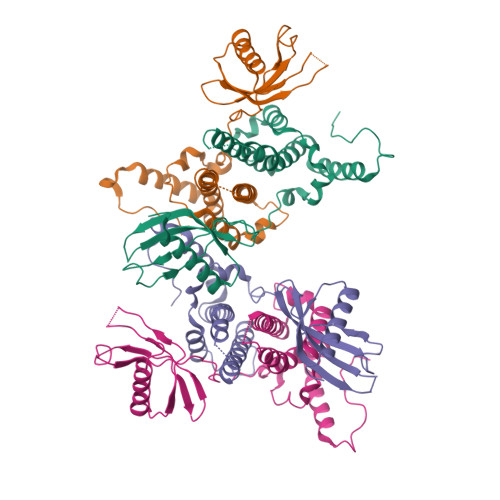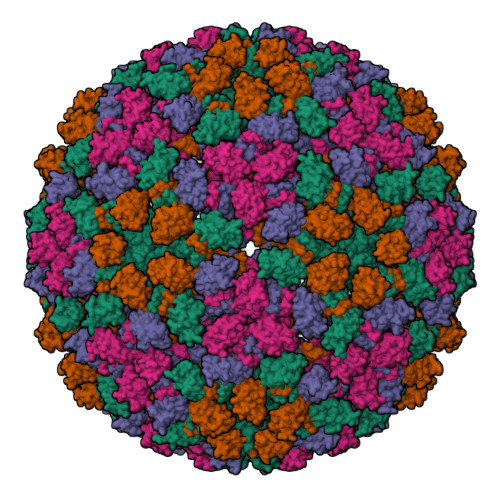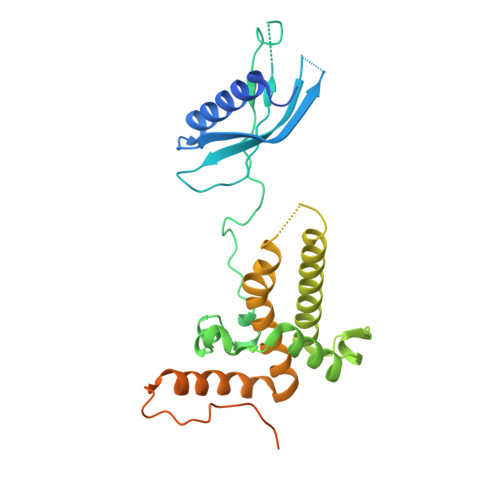A VLP vaccine platform comprising the core protein of hepatitis B virus with N-terminal antigen capture.
Fatema, K., Snowden, J.S., Watson, A., Sherry, L., Ranson, N.A., Stonehouse, N.J., Rowlands, D.J.(2025) Int J Biol Macromol 305: 141152-141152
- PubMed: 39961558
- DOI: https://doi.org/10.1016/j.ijbiomac.2025.141152
- Primary Citation of Related Structures:
9FWE, 9FWF - PubMed Abstract:
Nanoparticle presentation systems offer the potential to develop new vaccines rapidly in response to emerging diseases, a public health need that has become increasingly evident in the wake of the COVID-19 pandemic. Previously, we reported a nanoparticle scaffold system termed VelcroVax. This was constructed by insertion of a high affinity SUMO binding protein (Affimer), able to recognise a SUMO peptide tag, into the major immunodominant region of VLPs assembled from a tandem (fused dimer) form of hepatitis B virus (HBV) core protein (HBc). Here we describe an alternative form, termed N-VelcroVax, a VLP vaccine platform assembled from a monomeric HBc protein (N-anti-SUMO Affimer HBc 190) with the Affimer inserted at the N-terminus. In contrast to the tandem form of VelcroVax, N-VelcroVax VLPs were expressed well in E. coli. The VLPs effectively bound SUMO-tagged Junín virus glycoprotein, gp1 as assessed by structural and serological analyses. Cryo-EM characterisation of N-VelcroVax complexed with a SUMO-Junín gp1 showed continuous density attributable to the fused Affimer, in addition to evidence of target antigen capture. Collectively, these data suggest that N-VelcroVax has potential as a versatile next generation vaccine scaffold.
Organizational Affiliation:
Astbury Centre for Structural Molecular Biology, School of Molecular and Cellular Biology, Faculty of Biological Sciences, University of Leeds, Leeds LS2 9JT, United Kingdom.
















